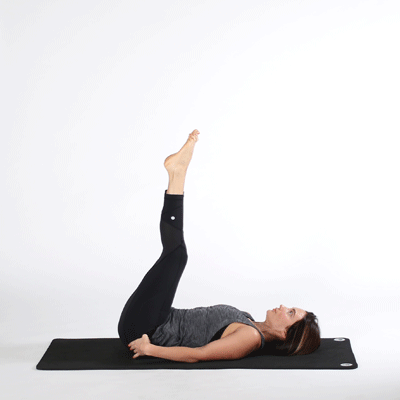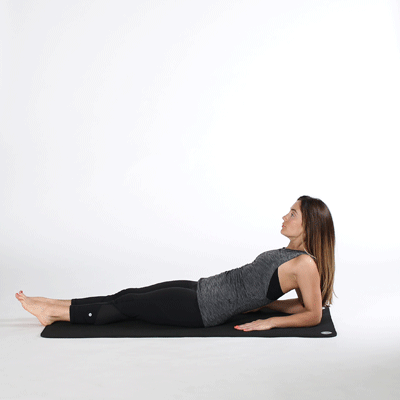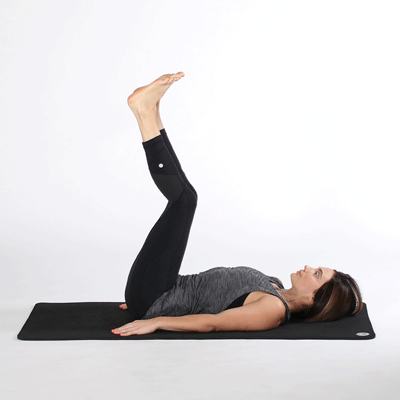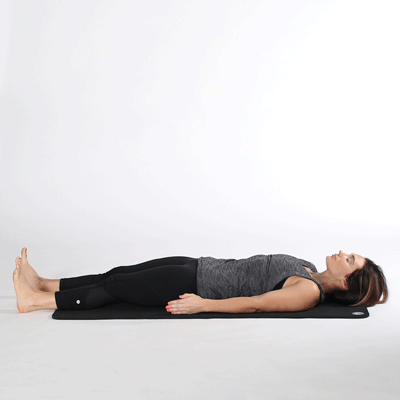Can yoga help your thyroid?
Yoga brings many benefits to your overall health and well-being. It can balance your energy, increase flexibility, and relieve stress. There is a connection between stress and hypothyroidism, but certain yoga poses are thought to balance out thyroids that are either underactive or overactiveTrusted Source
Several studies have shownTrusted Source the positive effect of yoga on improving thyroid function. Keep in mind that these poses cannot cure your thyroid imbalance. Yoga is considered a complementary therapy. It shouldn’t be used as a replacement for any therapies or medications you’re currently undergoing.
Seek out a qualified yoga teacher who can help you put together a customized sequence that will be beneficial to your condition. Check with your doctor before beginning any yoga program.
Yoga poses for your thyroid
Most of these poses are considered throat-stimulating. They’re thought to improve circulation and energy flow around the thyroid, and stretch and strengthen the neck.
Be sure to honor the limitations of your body. Be gentle and easy with yourself. You can adjust or modify the poses to suit your needs. You don’t have to do all of the poses in one session. You can try a pose or two throughout the day.
1. Supported shoulderstand
Shoulderstand is often the first pose that’s suggested to treat the thyroid. Since it’s an inversion, it stimulates blood flow to the glands in the upper body. This is believed to have a positive effect on the efficiency of the thyroid. Additionally, the way your chin is tucked into your chest in this position is believed to benefit thyroid function.

- You can use a folded towel or blanket under your shoulders for support.
- Bring your shoulders to the edge of the blanket and let your head rest on the mat.
- Lie flat on your back with your arms alongside your body and your palms facing down.
- Press your arms and back into the floor for support.
- On an inhale, lift your legs up to ninety degrees.
- Slowly exhale and bring your legs over your head.
- Your feet can balance in the air.
- Bring your hands to your lower back to support your body.
- Keep your fingers pointing up toward your hips with your pinky fingers on either side of your spine.
- Raise your legs straight up toward the ceiling.
- Aim to keep your shoulders, spine, and hips in one line if it’s possible.
- You can also keep your hips away from your body at an angle.
- Keep your chin tucked into your chest as you keep your neck in one position.
- Release the pose by slowly releasing your legs back over your head.
- Bring your arms back alongside the body.
- On an inhale, slowly roll your spine down vertebrae by vertebrae and lift your legs to ninety degrees.
- Exhale as you lower your legs to the floor.
Be mindful of your neck during this pose and discontinue the practice if you have any discomfort. It’s advised that you learn this pose under the tutelage of a teacher who has a strong knowledge of alignment. Remember that this pose is not recommended to everyone due to the possibility of injury.
2. Plow pose
In plow pose, your thyroid is believed to get the same stimulation as it does in shoulderstand. You may find it easier to do plow pose.

- Lie flat on your back with your arms alongside your body and your palms facing down.
- Press your arms and back into the floor for support.
- On an inhale, lift your legs up to ninety degrees.
- Slowly exhale and bring your legs over your head.
- Bring your hands to your lower back to support your body.
- Keep your fingers pointing up toward your hips with your pinky fingers on either side of your spine.
- You may place a bolster or block under your feet if they don’t reach the floor.
- Keep your hands on your hips if your feet do not touch reach the floor or the prop.
- If it’s comfortable and your feet are supported, you can bring your arms alongside your body or interlace your fingers in front of your hips. You may also bring your arms overhead.
- Release the pose by bringing your arms on the floor alongside your body.
- Slowly inhale to lift your legs up and realign your spine along the floor.
- Exhale to lower your legs to the floor.
You can use pillows to support your feet if they don’t reach all the way to the floor.
2. Fish pose
Fish pose is the perfect counter pose to shoulderstand. It’s more accessible and can also be done on its own.

- Sit on your buttocks with your legs extended in front of you.
- Move to one side at a time so you can place your hands underneath your buttocks.
- Face your palms down and your fingers facing toward your toes.
- Draw your elbows into each other and open your chest.
- Slowly lean back onto your forearms and elbows.
- Again, open your chest as much as possible and press into your arms to stay lifted.
- Drop your head back if you feel comfortable.
- Release by lifting your head, releasing your hands, and lying down on your back.
Fish pose and shoulderstand are thought to be most effective for improving thyroid function. As you let your head hang back in fish pose, you stimulate your thyroid by exposing the throat area.
4. Legs-up-the-wall pose
Viparita Karani, or legs-up-the-wall pose, is a restorative inversion. It doesn’t put pressure on the neck and is suitable for most people. It’s an excellent choice since it’s passive and helps to restore your balance.

- Use a folded blanket or firm pillow underneath your hips for support.
- Add more height to the support if you’re more flexible.
- Sit with your right side against the wall.
- Lift your legs up along the wall at the same time as you lie back.
- Your buttocks can be right up against the wall or a few inches away.
- Experiment to find the height and distance that works for you.
- Soften your throat as you relax your neck and chin.
- You can keep your arms alongside your body, above your head, or in any comfortable position.
- Remain in this position for up to 20 minutes.
- You can perform a variation by allowing your legs to open wide to either side or bringing the soles of your feet together and bending your knees.
- Release the pose by pushing yourself away from the wall.
This pose is thought to relieve stress that can contribute to thyroid imbalance. Try holding this pose for at least 5 minutes at a time.
5. Cat-cow pose
The fluid motion in cat-cow pose is also believed to stimulate your thyroid. Drawing your chin into your chest and then exposing your throat chakra brings blood flow to this area.

- Come onto all fours with your wrists directly under your shoulders and your knees underneath your hips.
- Move your weight forwards and backward and side-to-side.
- Then return to center and ensure you have equal weight on all four points.
- Inhale and let your belly fill with air and drop toward the mat.
- Look up toward the ceiling and lengthen your neck and throat.
- Exhale and draw your navel into your spine.
- Tuck your chin into your chest as you lift and round your spine toward the ceiling.
- Allow your breath to guide the movement.
- Continue this flowing movement for a few minutes.
- Release by sinking back into child’s pose for a few moments.
This pose is thought to benefit the circulation of spinal fluid. This is believed to increase mental clarity and enhance energy. Focus your awareness on your throat area as you move through this pose.
6. Boat pose
The position of your neck in boat pose is said to have a positive influence on the thyroid.

- Sit on the floor with your legs extended in front of you.
- Place your hands on the floor beside you.
- Slowly lean your upper body back slightly.
- Keep your spine straight and your chin tucked in toward your chest.
- Balance on your two sitting bones and your tailbone.
- Bend your knees before lifting your legs into the air.
- Straighten your knees if it’s possible.
- Bring your toes a little higher than eye level.
- Lift your arms so they’re parallel to the floor with your palms facing each other.
- You can hold the backs of your thighs or keep your hands on the floor if it’s more comfortable.
- Engage your core as you keep your breathing deep and relaxed.
- Stay in this pose for up to 1 minute.
- Release the pose by bending your knees into your chest.
- Continue balancing on your sitting bones.
- Hug your legs and drop your head down for a few moments.
Keep your chin tucked in slightly as you breathe steadily in this pose. Stay upright and refrain from leaning back too far. You can modify the pose by bending your knees.
7. Camel pose
The strong neck extension in camel pose is said to stimulate the thyroid gland and increase circulation to this area.

- Come onto your knees with your feet extended behind you.
- Keep your knees, hips, and shoulders in one line.
- Place your hands at the base of your spine with your fingers facing down.
- Keep your pinky fingers on either side of your spine.
- Draw your elbows in toward each other and open your chest.
- Keep pressing your thighs and hips forward as you slowly bend back.
- Let your head drop back if it’s comfortable.
- If you feel supported you can reach back to hold your ankles.
- You can move onto your toes to make it easier to reach.
- If you’re very flexible, you can walk your hands further up your legs.
- Bring your hands back to your lower back before lifting up to release the pose.
- Relax in child’s pose or downward facing dog.
8. Cobra pose
Cobra pose brings gentle stimulation to the thyroid gland. It’s not as intense as some poses that have you tilting your head all the way back. That said, it’s okay to fully release your neck in this pose and let it drop back. Do this only if it feels comfortable.

- Lie flat on your stomach with your hands underneath your shoulders and your palms pressing down.
- Squeeze your elbows into the side of your chest.
- Press into your palms as you feel the energy of your thumbs drawing back. Feel the energy of your pinky fingers moving forward.
- On an inhale, slowly lift your head, chest, and shoulders.
- Come partway, halfway, or all the way up.
- Keep a slight bend in your elbows.
- If it’s comfortable you can let your head drop back.
- Release the pose by bringing your head back to centre.
- On an exhale, slowly lower back down to the mat.
- Relax your arms by your sides.
- Gently shake your hips from side to side to release your lower back.
You can also keep your head facing forward and do gentle neck twists from side to side. Turn to look over one shoulder and gaze back at your feet. Return to centre and turn to the opposite side.
9. Upward bow (wheel) pose
Wheel pose is believed to be a heart opener, which means it gives you energy. It also stimulates energy flow to the thyroid area as your neck opens.

- Lie flat on your back and bend your knees to bring your heels in close to your body.
- Bring your elbows to face toward the ceiling as you put your hands on the floor next to your head.
- Keep your fingers pointing toward your shoulders.
- Make sure your feet are not wider than your hips.
- Press into your feet and on an exhale, lift up your tailbone and buttocks.
- Draw the energy of your knees together and keep your thighs strong.
- Press into the insides of your feet.
- Then press into your hands as you lift up onto the crown of your head.
- Next press all four points into the floor as you lift your head off the floor and straighten your arms.
- Allow your head to hang back and release any tension in the throat.
- Slowly release out the pose the same way you came up.
- Allow yourself some time to completely relax your body.
If this pose is too difficult or causes you any pain, don’t do it.
10. Corpse pose
While this pose may not seem difficult, it can actually be challenging to lie in stillness for a stretch of time. This pose allows your body to rest open fully and completely supported.

- Lie flat on your back with your feet about hip-width apart and your toes splayed out to the side.
- Extend your arms away from the body with your palms facing up.
- Place your head, neck, and spine in one line.
- Allow yourself to relax completely and let go of any tension in the body.
- Fall heavy to the floor as you allow your breath to relax.
- You may wish to bend your knees to support your lower back.
- You can place pillows under your knees for additional support.
Corpse pose allows for complete relaxation. It’s a great way to unwind and destress. It helps you to become aware of any tension you’re holding in your body. Keep your awareness on your breath moving through your body. Notice how your body feels. You can practice for up to 25 minutes. You may choose to do a guided meditation or yoga nidra session while you lie in corpse pose.
The takeaway
Adding some or all of these yoga poses to your routine may help to improve your thyroid function. Do what feels best on a daily basis. Try to do at least a little bit of yoga each day.
These poses may lead you to discover new variations and postures that bring you the most benefit. Always listen to your body. Be aware of how each pose affects you and especially your thyroid.


Good day
i have only just seen the challenge, is it still possible to enter.
Hi Robyn. Unfortunately it is too late to enter this challenge, but keep an eye on our social media pages, we will be doing another one in the new year.